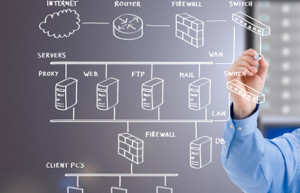 A business depends upon the proper functioning of its network; sometimes, the network may become sluggish and outages are more common. In such cases, the efficiency and downtime of employees is affected which in turn affects the revenue generated. Therefore, it’s important to keep your network performance in check and ensure that it is optimum.
A business depends upon the proper functioning of its network; sometimes, the network may become sluggish and outages are more common. In such cases, the efficiency and downtime of employees is affected which in turn affects the revenue generated. Therefore, it’s important to keep your network performance in check and ensure that it is optimum.
You might be thinking to purchase new and faster hardware, but before you do so, there are certain methods and strategies to improve your network’s performance without spending humongous amounts of money.
· Stripe your Hard Disks
There are times when you may blame the network itself for being slow, but it isn’t the culprit. The real culprits are your hard disks which store all types of data. So, what can you do? Well, you can merge all the hard drives into a single logical hard drive and have the data stripe across all of them.
Although there are a few downsides to this method, it will certainly improve the performance of the network. This technique is also known as ‘Raid O’.
· Balance Out the System Load
Many servers have the tape drives, hard drives, NIC input and output modules on the same bus which can cause congestion and lower efficiency of the network. Furthermore, when on the same bus, data doesn’t travel directly to the NIC from the hard drive. Therefore, separate all the components and put them on individual buses.
· Remove any Unnecessary Network Protocols
You might be using Appletalk, NetBEUI, and NetWare IPX on each and every interface of the server; this can slow down the network and increase congestion. To prevent it, get rid of any network protocols you aren’t using.
· Optimize the TCP/IP Settings
Most people tend to overlook this aspect if they cannot find the real reason for their network’s degraded performance. If you cannot find any other major reason, check your TCP/IP settings and ensure that the window size is appropriate by monitoring the bandwidth delay product.
· Implement New Network Models
Newer technologies are continuously on the rise and thus, you can use such technologies to build better networking models that reduce the latency or usage of WAN bandwidth. As an example, you can try implementing content networking, web services, WAFS, and terminal servers.
· Protect Your Network
Another factor that is often ignored is the fact that a network is susceptible to external and internal threats and that can also negatively impact its performance. Therefore, you should take active measures to protect it from unwanted traffic by putting up firewalls and security protocols as well as installing updated versions of antivirus and antimalware applications.
· Prioritize and Manage Your Bandwidth
In order to keep an organization running smoothly, effectively, and efficiently, you should be able to manage your network’s bandwidth and give higher priority to applications and processes that are critical. For example, you can set your server’s processor to provide more processing power to applications that are critical to the business’s core operations.


